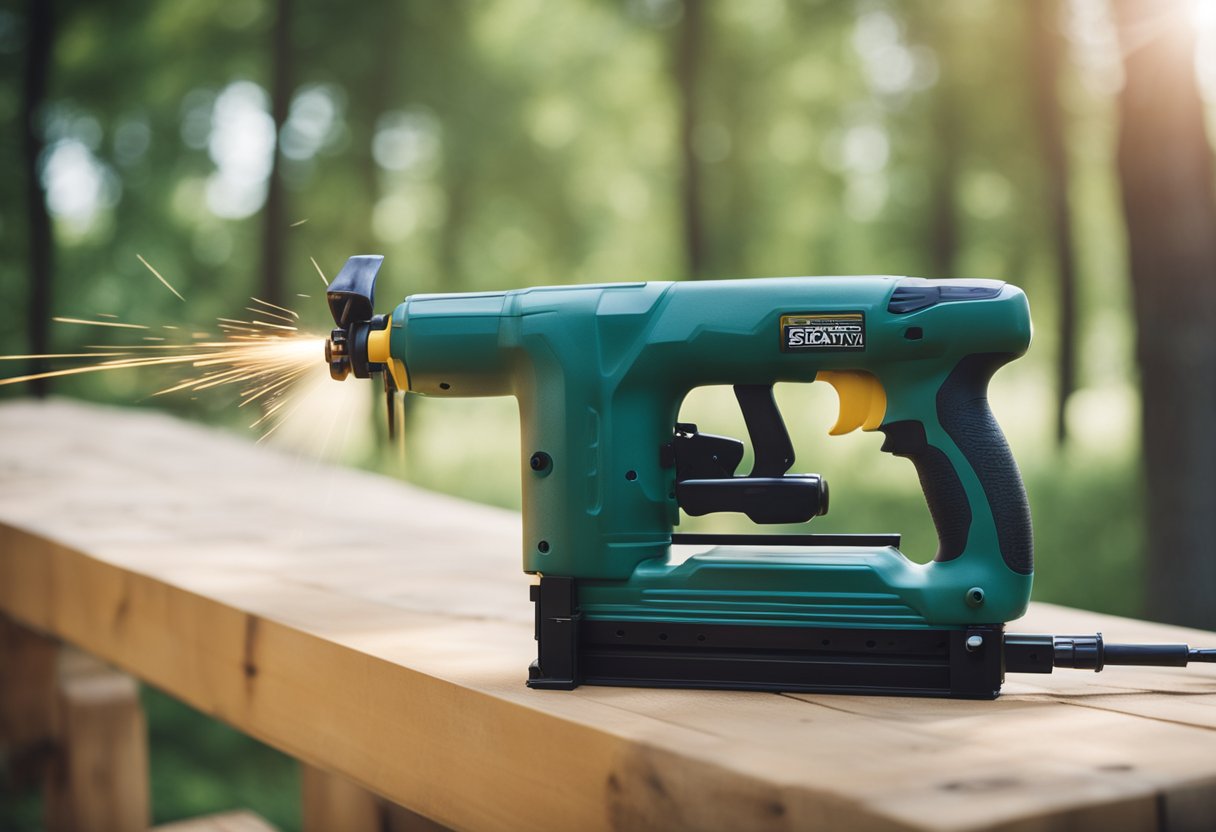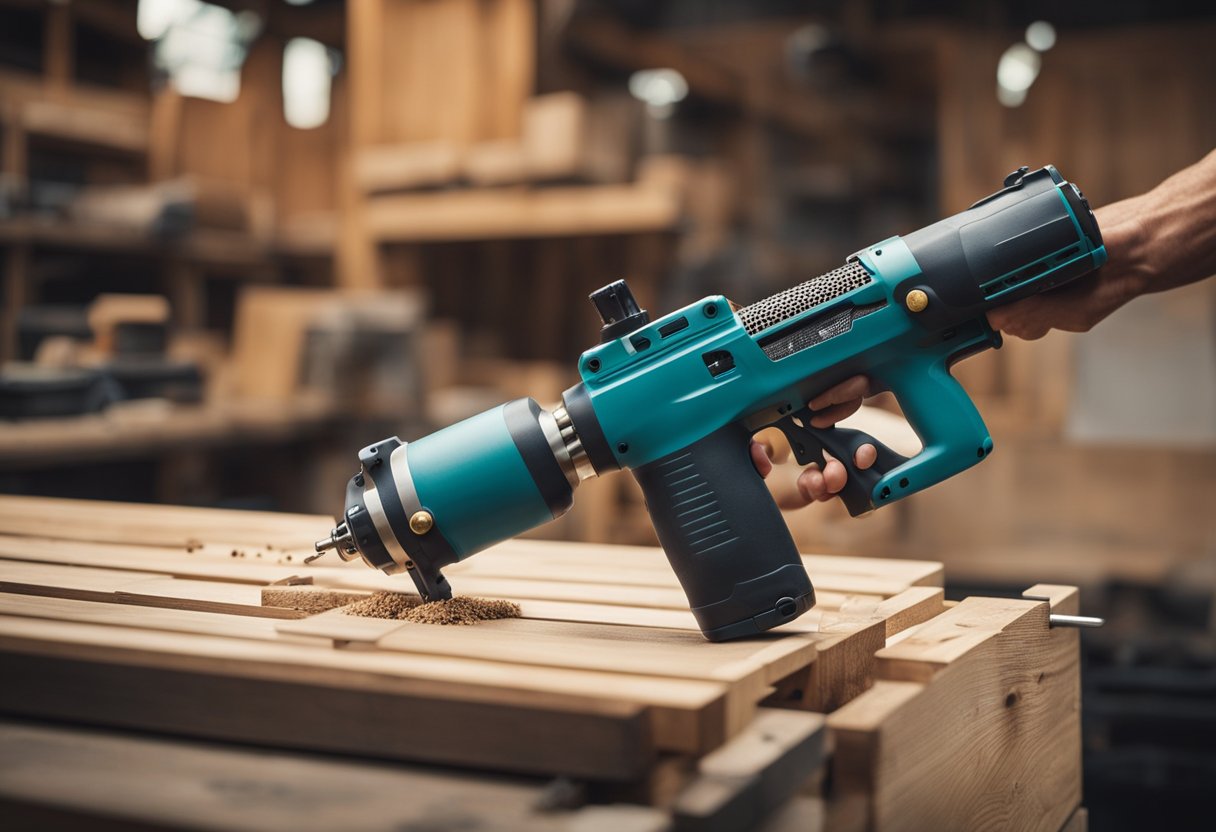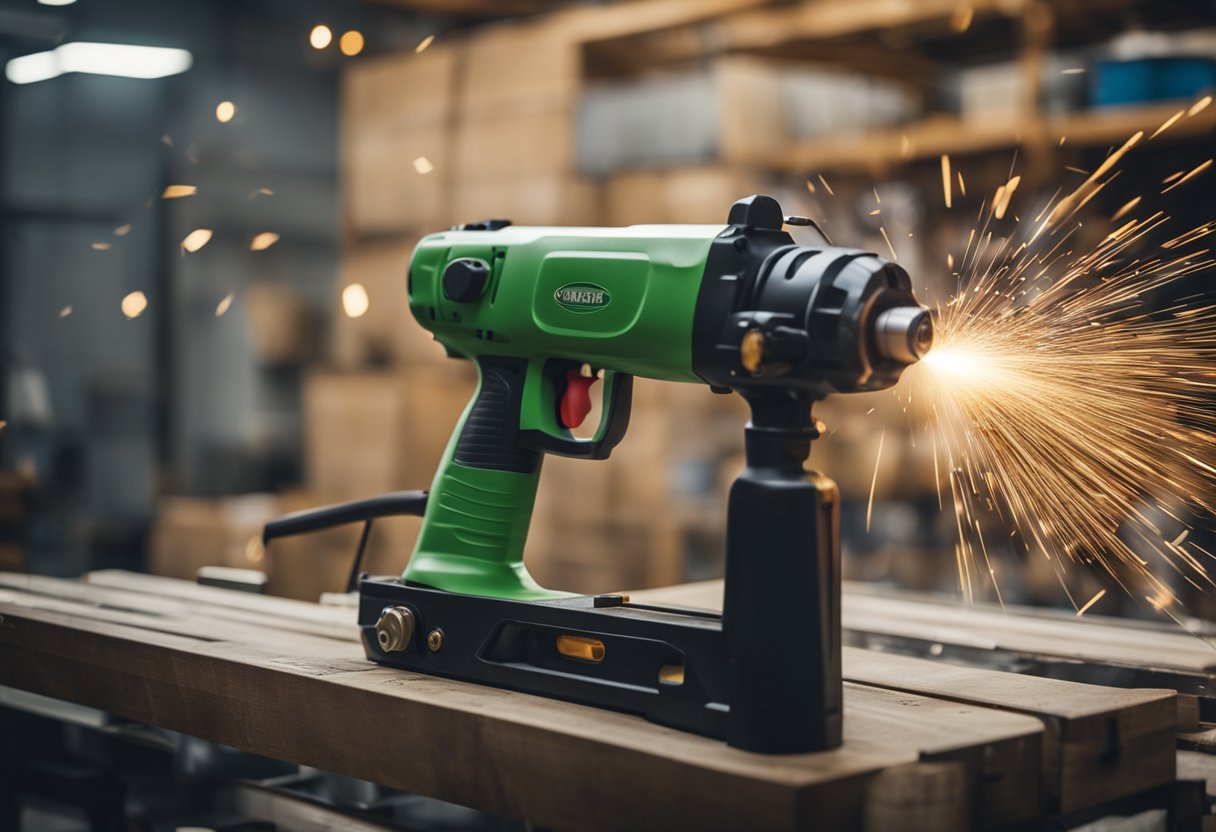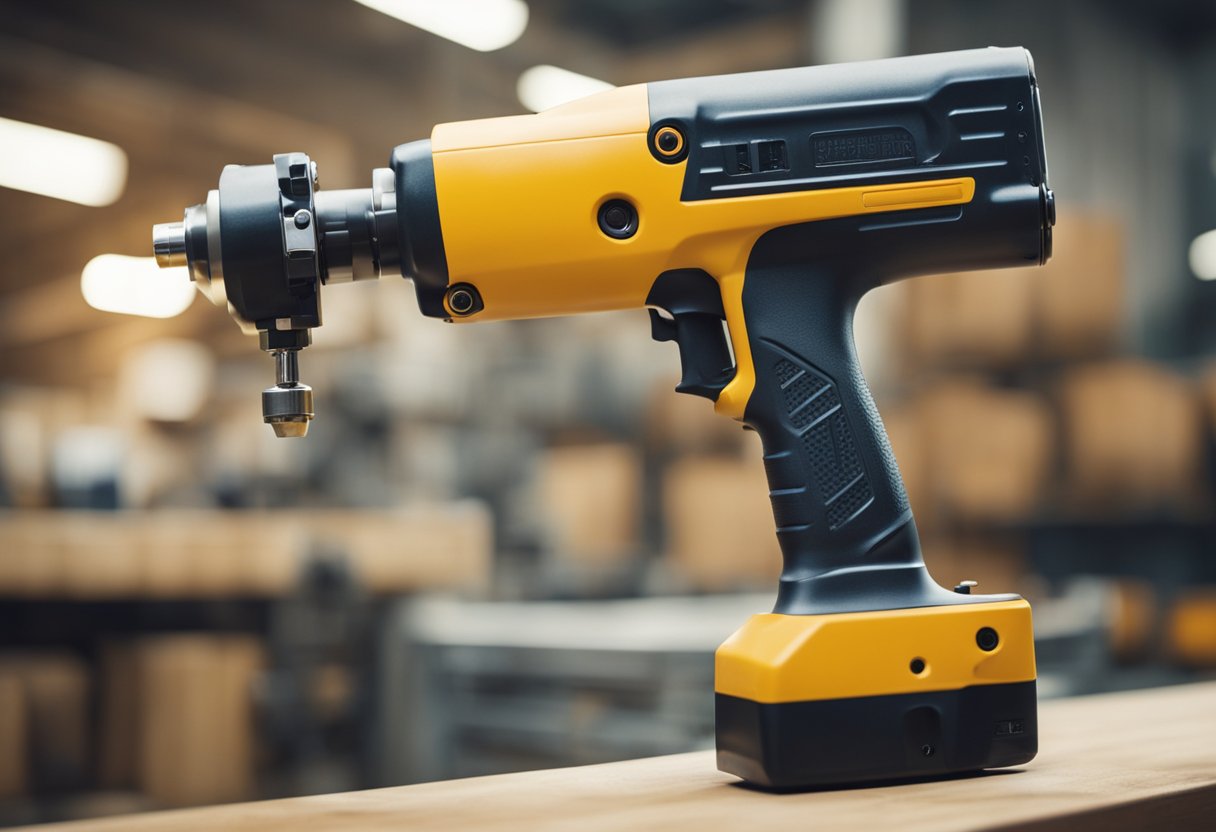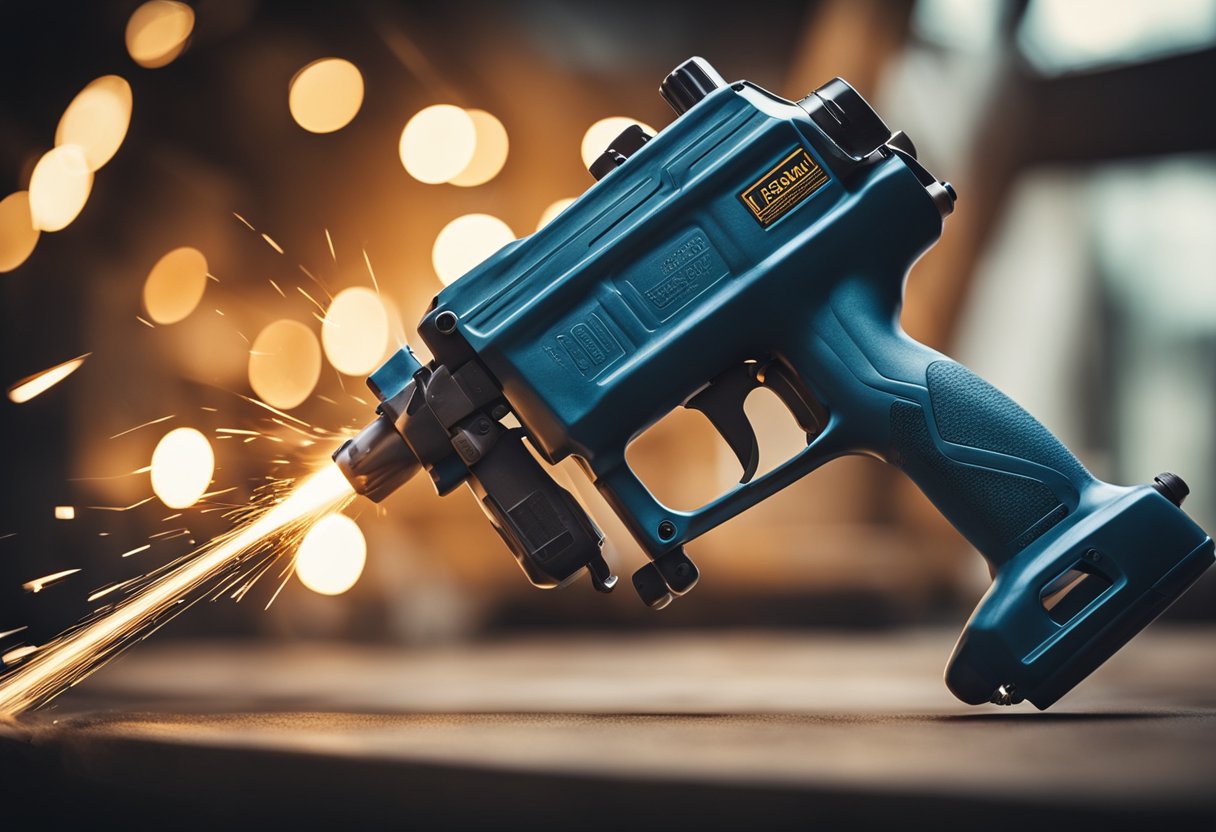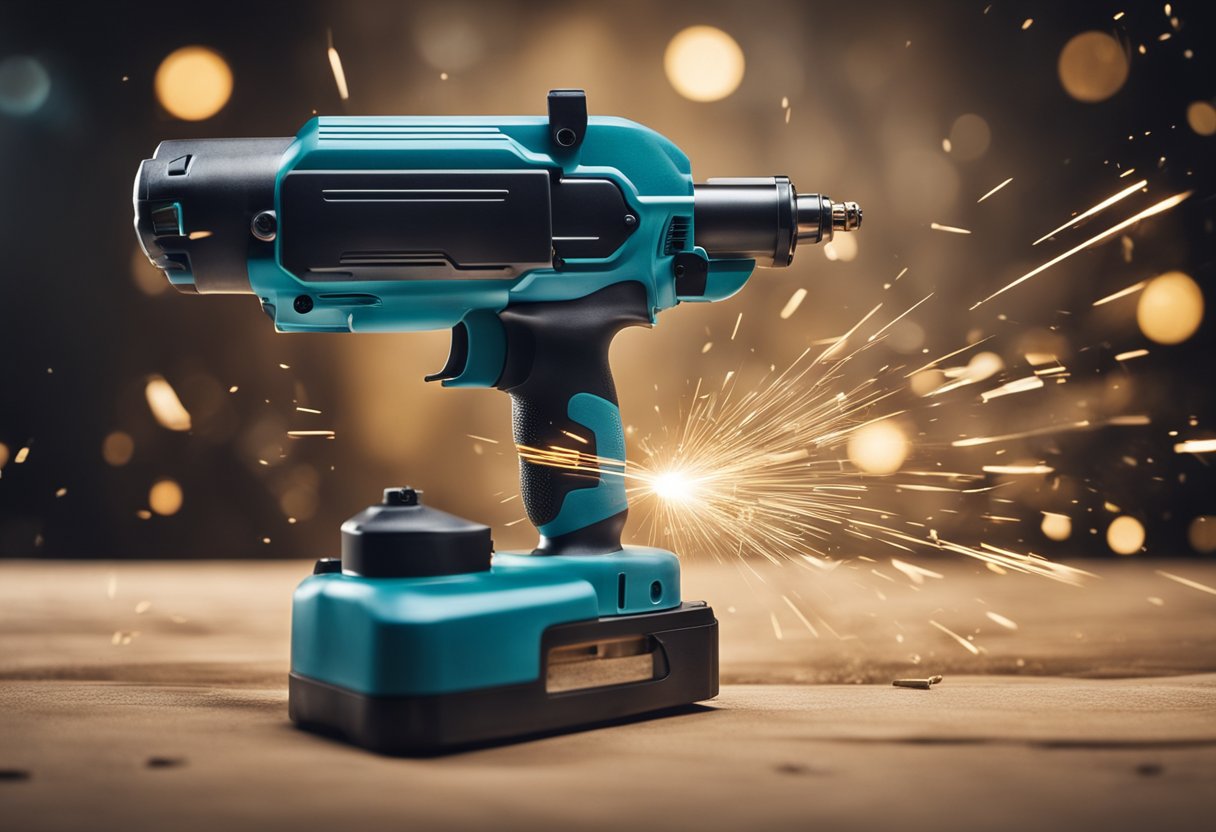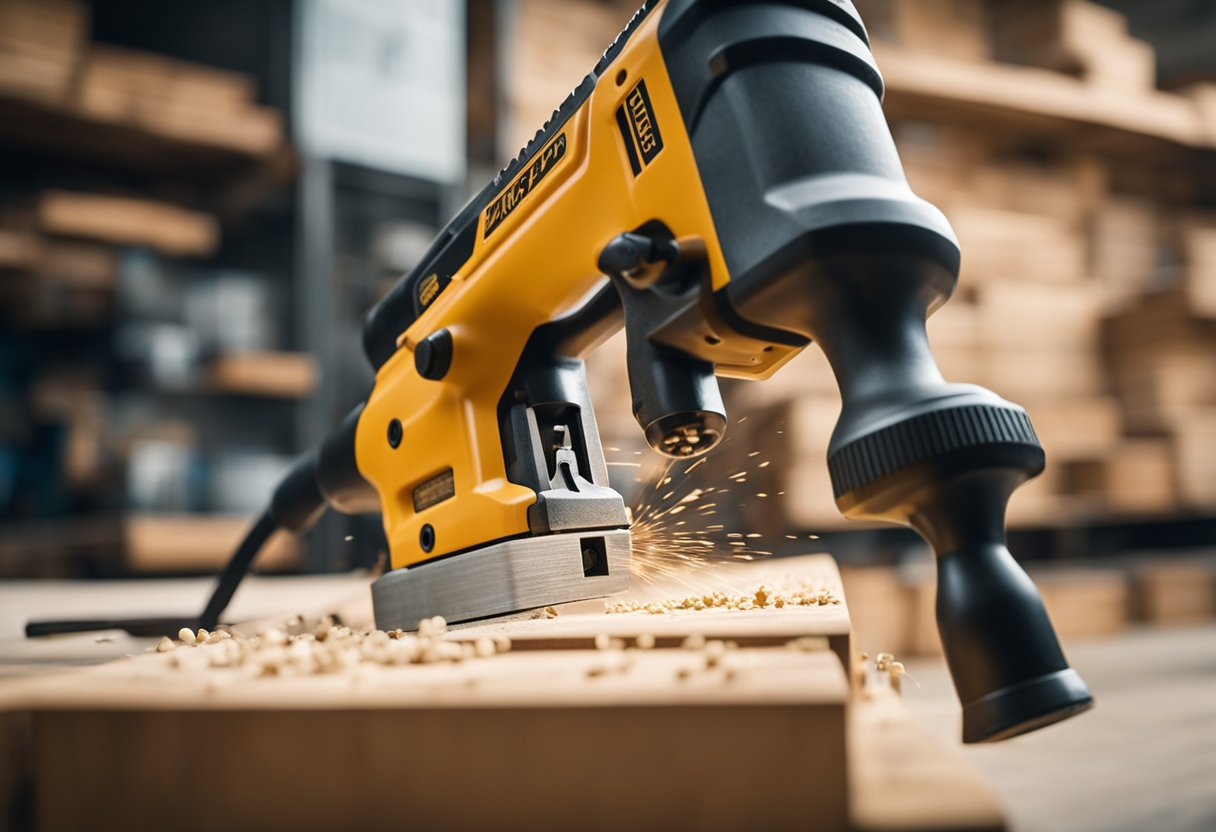Nail guns are a staple tool for any professional or DIY carpenter. They are fast, efficient, and easy to use. However, one of the most common questions that arise when using a nail gun is how fast it shoots nails. The answer to this question is not straightforward, as it depends on several factors such as the type of nail gun, the size of the nail, and the type of material being nailed.
Understanding how nail guns work is essential to determine how fast they shoot. Nail guns use compressed air, electromagnetism, or butane gas to drive nails into the material. The speed at which the nail is driven is determined by the power of the gun and the size of the nail. For example, a framing nail gun can shoot up to three nails per second, while a finish nail gun can shoot up to five nails per second. The speed at which the nail is driven is measured in feet per second, and it can range from 400 feet per second to 1,400 feet per second.
Key Takeaways:
- Nail guns are fast and efficient tools used by professionals and DIY carpenters.
- The speed at which a nail gun shoots nails depends on several factors such as the type of gun, the size of the nail, and the type of material being nailed.
- The speed at which the nail is driven is measured in feet per second and can range from 400 feet per second to 1,400 feet per second, depending on the type of nail gun.
Understanding Nail Guns
https://www.youtube.com/watch?v=4U3kqFPlBX4&embed=true
As someone who frequently uses nail guns, I understand the importance of selecting the right type of nail gun for a specific project. Nail guns come in various types, each tailored for specific applications. The common types of nail guns are pneumatic nail guns, cordless nail guns, finish nailers, roofing nailers, framing nail guns, pin nailers, brad nail guns, and finish nail guns.
Pneumatic nail guns are the most popular type of nail gun in the market. They are powered by an air compressor and are ideal for heavy-duty projects, such as framing and roofing. Cordless nail guns, on the other hand, are battery-powered and are great for smaller projects that require flexibility and mobility. They are also less noisy than pneumatic nail guns.
Finish nailers are designed for precision work, such as installing baseboards and crown molding. They use thinner nails that leave smaller holes and are less noticeable. Roofing nailers are specifically designed for roofing projects and can drive nails through shingles and other roofing materials. Framing nail guns are powerful tools that can drive long, thick nails into wood. They are ideal for construction projects that require a lot of nailing.
Pin nailers and brad nail guns are used for delicate work, such as attaching trim and molding. They use small nails that leave tiny holes and are less noticeable. Finish nail guns are similar to finish nailers, but they are more powerful and can drive larger nails.
Each type of nail gun has its own unique features and advantages. When selecting a nail gun, it is important to consider the type of project and the materials being used. By choosing the right type of nail gun, you can ensure that your project is completed quickly and efficiently.
Power and Speed
https://www.youtube.com/watch?v=2O6eH1VFgwY&embed=true
When it comes to nail guns, power and speed are two essential factors that determine how well they perform. The power source of a nail gun can vary from pneumatic to battery, gas, or electricity. However, regardless of the power source, the compressed air or energy generated by the power source is what drives the nail into the material.
The speed at which a nail gun shoots is measured in velocity, and it can vary depending on the type of nail gun and the power source. Pneumatic nail guns are among the most powerful, and they can shoot nails at speeds of up to 400 feet per second 1. This speed is more than enough to quickly and efficiently finish a job.
On the other hand, battery-powered nail guns are less powerful than pneumatic nail guns, but they are more convenient to use because they don’t require an air compressor or a hose. They are also quieter and produce less recoil than pneumatic nail guns. However, the speed at which battery-powered nail guns shoot is lower than that of pneumatic nail guns.
Gas-powered nail guns are also powerful and can shoot nails at high speeds, but they are heavier and more expensive than other types of nail guns. They are also not suitable for indoor use because they produce fumes.
In conclusion, the power and speed of a nail gun are critical factors that determine its performance. The type of power source and the velocity at which the nail gun shoots are essential considerations when choosing a nail gun for a particular job.
Types and Uses
When it comes to nail guns, there are a variety of types available for different uses. Some of the most common types include pneumatic, cordless, electric, and framing nailers.
Pneumatic nail guns are powered by compressed air and are great for heavy-duty construction projects, such as framing and roofing. They are typically used to drive nails into wood and other materials quickly and efficiently.
Cordless nail guns are battery-powered and offer greater mobility and flexibility than pneumatic nail guns. They are ideal for smaller projects, such as trim work and molding, and can be used to fasten a variety of materials, including wood, metal, and plastic.
Electric nail guns are similar to cordless nail guns in that they are powered by electricity instead of compressed air. They are often used for home improvement and woodworking projects and are great for fastening materials such as wood and drywall.
Framing nailers are designed specifically for heavy-duty construction projects, such as building walls and decks. They are typically used to drive large nails into wood and other materials quickly and efficiently.
Staple guns are another type of nail gun that are used to fasten materials such as fabric and insulation. They are often used in upholstery and construction projects.
Overall, the type of nail gun you choose will depend on the specific project you are working on. Whether you are working on a construction project or a home improvement project, there is a nail gun out there that is perfect for your needs.
Safety and Precautions
As a professional who has worked with nail guns for years, I know that they can be a powerful and efficient tool when used properly. However, it is important to remember that nail guns can also be dangerous and cause serious injuries if not handled correctly. Therefore, it is crucial to take safety precautions seriously when working with a nail gun.
One of the most important safety measures to take when using a nail gun is to wear safety glasses. Nail guns can shoot nails at high speeds, and if a nail ricochets or hits a hard surface, it can cause serious eye injuries. Therefore, it is essential to wear safety glasses that meet the ANSI Z87.1 standard to protect your eyes from flying debris.
Another safety consideration when using a nail gun is to keep your fingers away from the trigger until you are ready to fire. Accidentally bumping the trigger can cause the nail gun to fire, which can be dangerous if you are not prepared. Therefore, it is important to keep your fingers away from the trigger until you are ready to use the nail gun.
It is also important to use the right nail gun for the job and to follow the manufacturer’s instructions carefully. Using the wrong nail gun or using it incorrectly can cause serious injuries. Therefore, it is important to read the instruction manual carefully and to make sure you understand how to use the nail gun properly before you begin working.
In summary, working with a nail gun can be safe and efficient if you take the necessary precautions and follow the manufacturer’s instructions. Remember to wear safety glasses, keep your fingers away from the trigger, and use the right nail gun for the job. By doing so, you can reduce the risk of injuries and work safely and efficiently.
Operating Mechanism
I have been exploring how fast a nail gun can shoot and now I will explain the operating mechanism of a nail gun. There are different types of nail guns available in the market, including pneumatic, cordless, and gas-powered nail guns.
Pneumatic nail guns use compressed air to drive nails into the surface. The air compressor is connected to the nail gun through a hose. When the trigger is pulled, the compressed air is released from the chamber and the nail is driven into the surface. The exhaust port expels the air from the nail gun after each shot.
Cordless nail guns are powered by batteries and do not require an external power source. These nail guns have a chamber that stores the battery and a motor that drives the nails. When the trigger is pulled, the motor rotates and drives the nail into the surface.
Gas-powered nail guns use butane to drive the nails. These nail guns have a chamber that stores the butane and a battery that ignites the gas to create the force required to drive the nail. When the trigger is pulled, the gas is ignited and the nail is driven into the surface.
All nail guns have a trigger mechanism that controls the release of the nails. There are two types of trigger mechanisms: contact-trip and sequential-trip. The contact-trip trigger requires the user to press the trigger and the nose of the nail gun against the surface to fire the nail. The sequential-trip trigger requires the user to press the trigger and then the nose of the nail gun against the surface to fire the nail.
In conclusion, nail guns are powerful tools that can drive nails into surfaces quickly and efficiently. The operating mechanism of a nail gun depends on the type of nail gun, but all nail guns have a trigger mechanism that controls the release of the nails.
Range and Precision
When it comes to using a nail gun, range and precision are two critical factors that determine the quality of the work. The range of a nail gun refers to the maximum distance that the nail can travel after being shot from the gun. The precision, on the other hand, refers to the accuracy of the nail gun in hitting the target.
Most nail guns are designed to shoot nails within a specific range, which can vary depending on the type of nail gun and the application. For instance, a framing nailer can shoot nails up to 3-1/2 inches long, while a finish nailer can shoot nails up to 2-1/2 inches long. The range of a nail gun is usually determined by the power of the gun, the angle of the nail gun, and the type of nail being used.
The shooting distance of a nail gun is also affected by the angle of the gun. The angle of the nail gun refers to the angle at which the nail is shot from the gun. There are two types of nail guns based on the angle at which the nail is shot: straight and angled. Straight nail guns shoot nails at a 90-degree angle, while angled nail guns shoot nails at an angle of 20 to 34 degrees. Angled nail guns are more versatile and can be used in tight spaces where a straight nail gun cannot fit.
In addition to the range and angle of the nail gun, precision is also an essential factor to consider. A nail gun that is accurate and precise can save time and money by reducing the number of nails that miss the target. The accuracy of a nail gun is affected by several factors, including the type of nail being used, the angle of the nail gun, and the skill of the user.
To ensure the accuracy of a nail gun, it is essential to use the right type of nail for the job. Using the wrong type of nail can result in a nail that is too long or too short for the material being fastened, which can lead to a nail that misses the target. It is also important to adjust the angle of the nail gun to ensure that the nail is shot at the right angle and hits the target accurately.
Overall, the range and precision of a nail gun are critical factors to consider when choosing the right nail gun for the job. By understanding the range and precision of a nail gun, you can ensure that you choose the right nail gun for your needs and achieve the best results possible.
Additional Features
There are several additional features that can enhance the performance of a nail gun. One of the most important features is the weight of the nail gun. A lightweight nail gun is easier to handle and reduces user fatigue, which is especially important when working on large projects.
Another important feature is the magazine capacity. A larger magazine allows for more nails to be loaded, reducing the need for frequent reloading. This can save time and increase productivity.
The nose of the nail gun is also an important feature. A precision nose allows for more accurate nail placement, reducing the need for additional finishing work. This is especially important when working on delicate or intricate projects.
Finish nailers are another type of nail gun that are designed for use on finished surfaces. They use thinner brad nails that are less likely to split the wood or leave visible marks. They are ideal for use on crown molding and other delicate trim work.
The number of nails per second that a nail gun can shoot is also an important consideration. A higher number of nails per second can increase productivity and reduce the time needed to complete a project.
Low velocity nail guns are also available. These guns are designed to reduce the risk of damage to the material being nailed. They are often used in applications where a high degree of precision is required.
Overall, the additional features of a nail gun can greatly enhance its performance and make it easier to use. Whether you are a professional contractor or a DIY enthusiast, it is important to choose a nail gun that meets your specific needs and requirements.
Frequently Asked Questions
What is the average speed of a nail fired from a pneumatic nail gun?
The average speed of a nail fired from a pneumatic nail gun is around 400 feet per second. However, the speed can vary depending on the type of nail gun and the size of the nail being used. Pneumatic nail guns are known for their rapid firing capability, and they can often drive nails at a rate of several nails per second.
What are the safety concerns when using a nail gun?
Nail guns can be dangerous if not used properly. The most common safety concern is accidental firing of the nail gun, which can result in serious injury. It is important to always keep your finger off the trigger until you are ready to fire and to never point the nail gun at anyone, even if it is not loaded. Additionally, it is important to wear proper safety gear, including eye and ear protection, when using a nail gun.
What is the maximum distance a nail can travel when fired from a nail gun?
The maximum distance a nail can travel when fired from a nail gun depends on the type of nail gun and the size of the nail being used. According to House and Home Online, the average nail gun can shoot nails up to an astonishing speed of 1,400 feet per second, which is equivalent to 950 miles per hour. However, the maximum distance a nail can travel is not recommended to be tested.
How does a nail gun work?
A nail gun works by using compressed air to drive a nail into a material. When the trigger is pulled, compressed air is released, which drives a piston that pushes the nail out of the gun and into the material. Some nail guns use a spring mechanism instead of compressed air.
What materials can be used with a nail gun?
Nail guns can be used with a variety of materials, including wood, metal, and concrete. However, it is important to use the correct type and size of nail for the material being used. Using the wrong type of nail can result in damage to the material or the nail gun, and can also be dangerous.
What are the different types of nail guns and their uses?
There are several different types of nail guns, each designed for specific applications. Some of the most common types include brad nailers, finish nailers, framing nailers, and roofing nailers. Brad nailers are ideal for delicate tasks like trim work and paneling, while framing nailers are designed for heavy-duty construction tasks like framing and sheathing. Roofing nailers are used for roofing projects, while finish nailers are used for finishing work like crown molding and baseboards.
Footnotes

Hi, I’m Sal Muller of Tooltrip.com. My DIY experience led me to understand essential power tools for home projects. Tooltrip.com guides enthusiasts and professionals in choosing right tools for any job. I provide concise top tool reviews for easier, efficient DIY.

